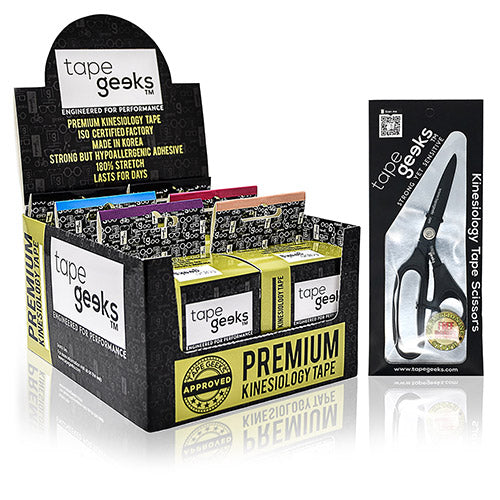
Swelling. What do you do for it? Every day on social media I get an article sent to me, with this question.
Do I apply ice? Do I apply heat? Do I compress? Do I move it? The list of questions could go on, but let's make our best attempt to answer them!

Shop our kinesiology tape now
Shop Now
Do I apply hydrotherapy?
For the longest time applications of ice have been used on acute injuries and heat on chronic injuries.
Ice or heat may be used to control pain or the perception of pain. If applications reduce your pain and make you more comfortable then I see value in their use.
Secondly, in cases where there is bleeding and the presence of swelling ice could be chosen to overheat.
There is a difference between synovial fluid (essentially water) and blood, which causes bruising. While synovial fluid clears itself well, blood does not. In an acute scenario where bleeding is present, ice may be chosen to decrease the threat of further bleeding.
So my answer. IT DEPENDS!

Shop our bundles now
Shop Now
Do I move it?
Yes. Bracing and inactivity are a thing of the past. The best example of this is the world of orthopedic surgery.
Times by which limbs are being restricted in movement have drastically reduced. Early intervention, education, and movement lead to better outcomes across the board.
So yes, move. Move pain-free and move often. Place yourself in an environment that promotes comfort, whether it's a pool, non-weight bearing, or weight-bearing with assistance.
If you are nervous or the injury seems significant, seek professional guidance.
Do I compress it?
This is tricky. Compression works and it works well, but what about decompression?!
There are two systems in the body that drain fluid.
Veins are a closed system that returns fluid back to the heart. If we compress or elevate this system, we will help with fluid clearance. Downsides to compression include discomfort and reduced function.

Shop TG Cohesive Bandage
Shop Now
Compression also eliminates our most effective fluid clearing system in the body, the lymphatic system. For this reason, elevation in the place of (or alternated with) compression may allow for the best of both worlds.
The lymphatic system is the tortoise of fluid clearance in the body. It's slow and takes its time, but does an amazing job at clearing fluid. The lymphatic system works in harmony with movement to drain fluid through a process called imbibition.
Imbibition is body movement causing pressure change that assists fluid clearance. For example, the majority of the joints in our body are nourished through pressure changes as we walk.
My option to stimulate this system is through using kinesiology tape. The tape helps facilitate the lymphatic system. The system responds to light touch while maintaining functionality and preventing venous system collapse.
So try MED - Movement Elevation and Decompression and let me know what you think.
How are you managing acute swelling? We'd love to hear from you!
Learn more about kinesiology taping by visiting the Tape Geeks blog!

Shop our collection now
Shop NowSubscribe to the TapeGeeks Newsletter for new videos, discounts and more!Join The Geeks Club









